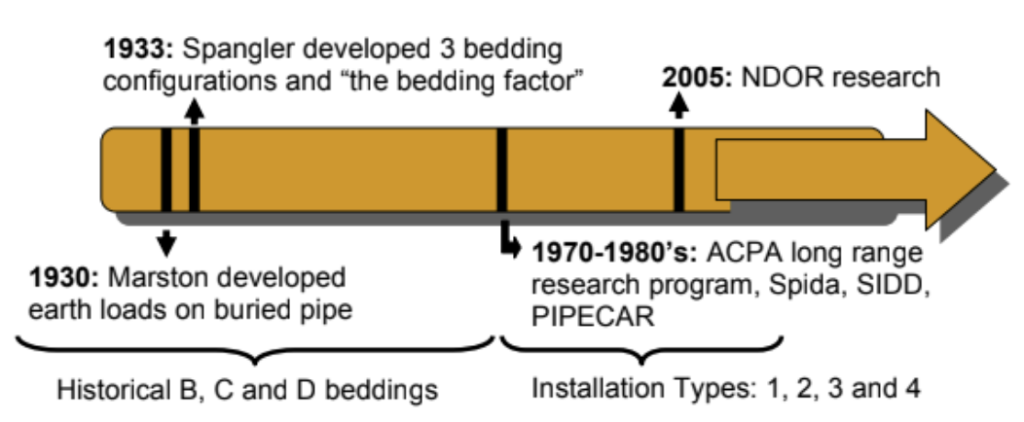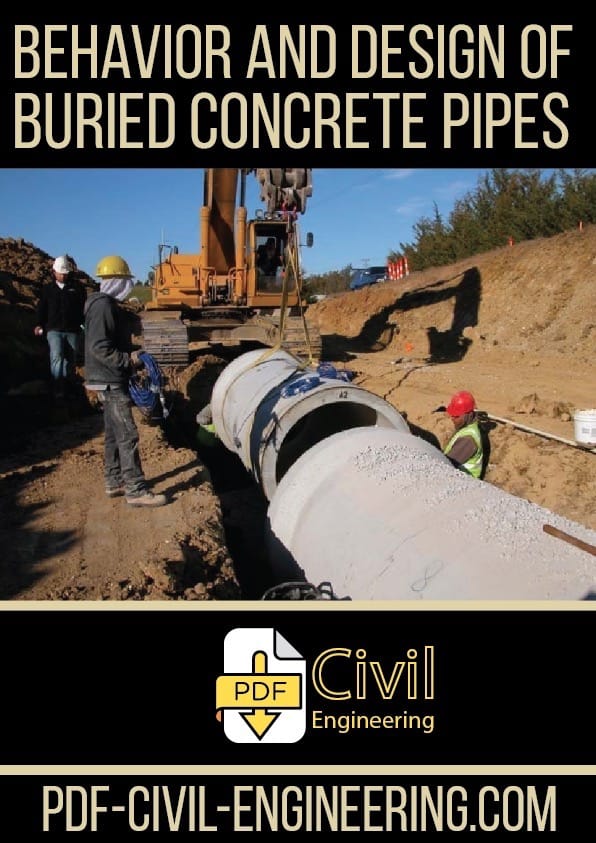INTRODUCTION
This report presents the findings of a year-long research project, where an indepth review of the available concrete pipe design methods and the Nebraska
Department of Roads (NDOR) pipe design policy is conducted. In this chapter, the project’s significance, objectives, and tasks are presented.
1.1. Problem Statement & Research significance
Figure 1 summarizes the history of reinforced concrete pipe design methods and development. Currently, two methods are available for the design of reinforced concrete pipes: the indirect design method and the direct design method. Both of the available design methods are proven to be reliable, yet as a result of recent advancements in manufacturing and construction, practical questions about the economy and state-of-the-art of the existing methods have developed.

Until the 1970’s, the indirect design method, an empirical method developed in the early 1900’s, was the only choice for the design of concrete pipes. According to this method, for circular pipes, ASTM C 655 defines the three-edge bearing ultimate load and an observed 0.01-inch crack width in terms of D-Loads multiplied
by a strength factor. ASTM C 76 specification contains tables for steel reinforcement requirement, maximum spacing, and minimum wall thickness. These tables present design requirements for classes of reinforced concrete pipes based on test data. All pipe in a given strength class have the same ultimate D-Load requirement and the same 0.01-inch-crack-width requirement regardless of the pipe diameter.
In the 1970’s, a new procedure for the design of precast concrete pipes was developed. In this procedure, referred to as the direct design method, strength and serviceability limits are considered. Data from previous test programs and routine testing for quality control including the three-edge-bearing test results were used to
develop the new design procedure. All tests were performed using a design concrete strength of less than 7,000 psi, and the measured compressive strengths of concrete cylinders were between 2,500-7,500 psi. The yield strength of the steel reinforcement used was less than 60,000 psi.
Both methods of design for reinforced concrete pipes have proven to be conservative and reliable through the years, however, questions regarding the correlation between three-edge-bearing test results and the installed condition remain unanswered. Furthermore, due to the increasing use of high performance concrete, high strength reinforcing steel, larger diameter pipes and the advancements in analysis methods, previous empirical evaluations of the structural behavior of reinforced concrete pipe must be revisited. Both the indirect and direct design methods need to be verified for their adaptability to these advancements in construction technology and structural analysis. A detailed study where the available design methods are critically reviewed and possibilities of incorporating these advancements are investigated, will lead to a better understanding of the pipe behavior and the refinement of existing design methods.
- 2. Objectives
The objectives of this research are:
- To evaluate the methods used by NDOR for design of concrete pipe culverts by comparing these methods with methods used in other states, recent research results and national recommendations.
- To evaluate the design criteria and the design practice for reinforced concrete pipes, and suggest changes for consideration.
- To evaluate current NDOR concrete pipe construction specifications and suggest changes for consideration.
The long term objective of the study is:
- To improve the design criteria, construction specifications, and the theoretical understanding of the structural behavior of concrete pipes to achieve more rational, economical, and safer design methods.
Table of Contents
Acknowledgements
List of Figures
List of Tables
- INTRODUCTION
1.1. Problem Statement & Research significance - 2. Objectives
1.3. Research Plan & Tasks - REVIEW OF CONCRETE PIPE DESIGN PROCEDURES
2.1. Review of Available Pipe Design Methods
2.1.1. Indirect and Direct Design Methods: A General Comparison
2.1.2. Indirect Design Method: Pipe’s Supporting Strength
2.1.3. Direct Design Method: Pipe’s Supporting Strength
2.2. In-Depth Evaluation of Direct Design Method: Parametric Study - REVIEW OF NDOR PIPE POLICY
ONLINE SURVEY FOR DOT PIPE DESIGN - COLLABORATION WITH INDUSTRY
- REVIEW OF LITERATURE ON BEDDING FACTOR
- DEVELOPMENT OF EFFICIENT SHEAR REINFORCING
- SUMMARY AND DISCUSSION
- FUTURE WORK (Phase II)
- REFERENCES
- APPENDIX
